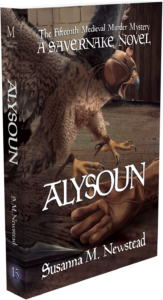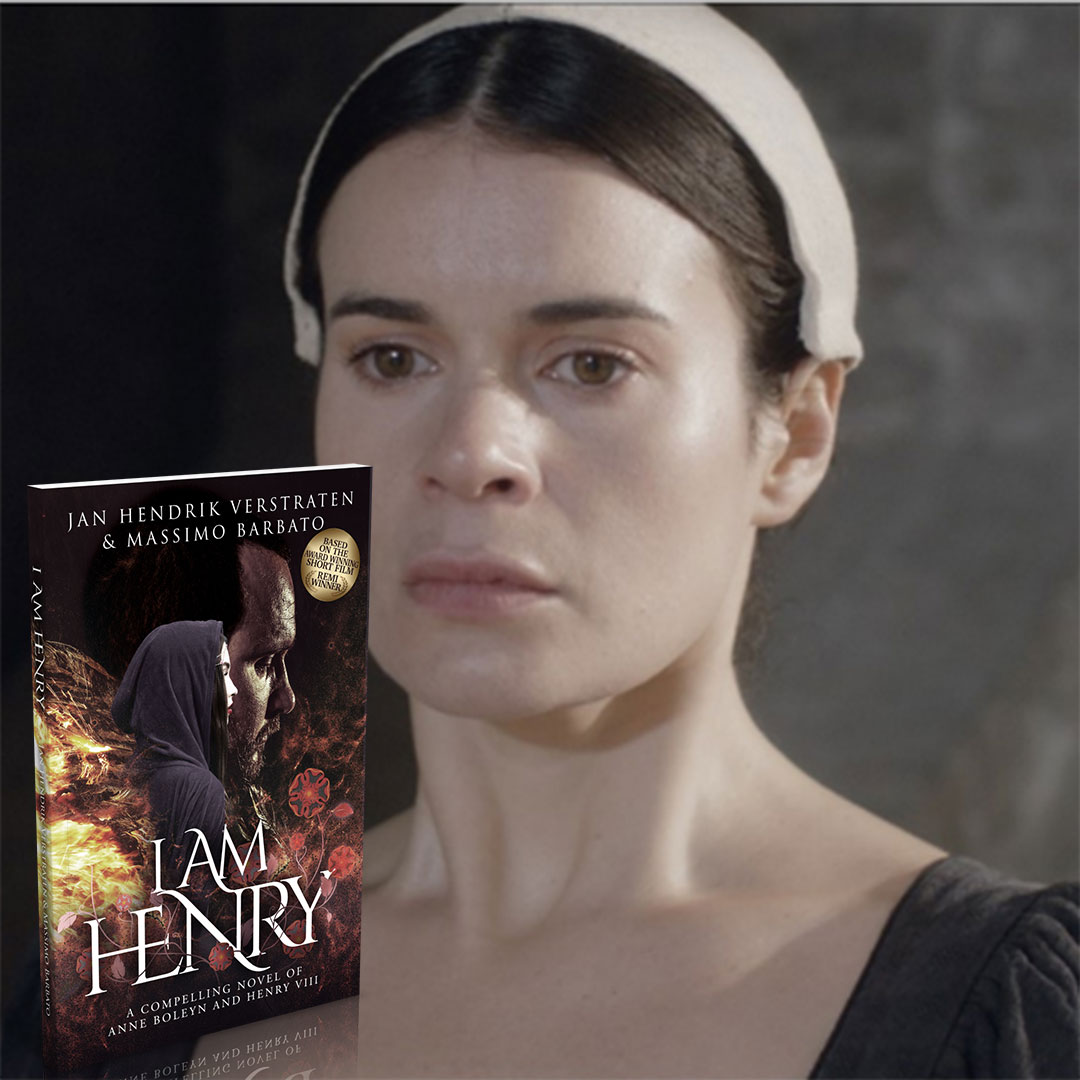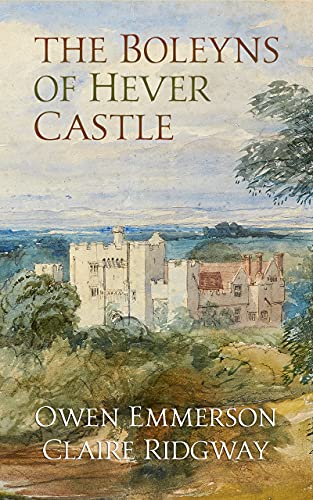 It’s been a busy few months for us here at MadeGlobal Publishing. We’re proud to announce that Susanna M. Newstead’s latest book, Alysoun, is now out for pre-order in paperback and on kindle e-book.
It’s been a busy few months for us here at MadeGlobal Publishing. We’re proud to announce that Susanna M. Newstead’s latest book, Alysoun, is now out for pre-order in paperback and on kindle e-book.
Alysoun Pre Order Now
Book is on sale from 1 December 2024
Alysoun
The date is 1208. A dead falconer. An abducted woman. And a boar spear.
Step into the enigmatic world of Aumary Belvoir, Constable of the county of Wiltshire and the revered Warden of Savernake Forest. Amidst the lush tapestry of medieval England, Aumary finds himself entangled in a web of treachery and deceit.
As he inherits his father-in-law’s majestic hunting birds, the air crackles with tension when his chief falconer is discovered lifeless in the mews. Was Roger Hawkes struck down by his own beloved creatures, or is a more sinister force at play?
The mystery deepens with the disappearance of Roger’s daughter, her clandestine marriage to the local iron master casting ominous shadows over the land. And when tragedy strikes once more with the murder of Cedric, Aumary’s young groom’s beloved Alysoun, the plot thickens with every passing moment.
But this is no ordinary time in England’s history; the suffocating grip of the English Interdict looms large, locking the doors of churches and shrouding the land in darkness. In this era of forbidden rites and suppressed whispers, Aumary must navigate a labyrinth of suspects and scarce evidence to untangle the threads of these heinous crimes.
Will this be the case that pushes our valiant Constable to his limits? With so many secrets veiled in the mists of time, Aumary Belvoir must summon every ounce of his wit and courage to unravel the truth.
Here’s an author interview with Susanna about Alysoun
Alysoun is set in 1208, a turbulent time in England due to the Interdict. How did the historical context of this period shape the story, especially in relation to Aumary’s challenges?
The reign of John, 1199 to 1216, is an era few authors tackle, even though it’s a fascinating time. The Papal Interdict lasted from 1208 for six years and was basically a ban on almost all church functions, enforced by Pope Innocent III. Although the fact that churches were closed was unpopular with the populace, life went on as normal as possible, except for church marriages, burials in hallowed ground, the saying of mass and confessions. To be honest, few common folk bothered too much about it and managed well without the church.
The Interdict came about because King John would not accept the Pope’s candidate for Archbishop of Canterbury, the senior churchman in the country. John needed to be able to trust his own primate and he felt he could not trust Stephen Langton, the Pope’s choice. The pope then punished John for his intransigence by declaring an Interdict. There were always ways around the bans – as there are even today. Aumary has to adhere to the law but he must also try to understand the feelings and concerns of the people he governs. The challenge is to be sympathetic but firm, if he is not to be fined for shirking his responsibilities. There are a few instances in this tale where Aumary must
tread a careful line between pleasing the church and remaining agreeable to his dependants. As time goes on, and the Interdict strengthens, Aumary becomes bolder, thinking around the problems faced by his people and in subsequent books we find him further pushing the boundaries. His sympathies always lie with John, his king and with the people he governs.
Aumary Belvoir is an intriguing character with both authority and personal vulnerabilities. What inspired his character, and how has he evolved over the course of the series?
In the 13th century, all folk were beholden to someone – the king being the ultimate holder of power. If Aumary wishes to keep his job, his holdings and his position in society, he must to a great extent, do what is expected of him without causing trouble. Like everyone else, he’s vulnerable.
However there are times when, because he likes to plough a lone furrow, he is happy to bend the rules. In previous books we see him at loggerheads with his immediate superior, Hugh de Neville. We also see him testing the loyalty of his king, over Aumary’s role as constable, the office John has created for him. It’s by no means certain he will always come out unscathed.
We first see Aumary as an untried young man of seventeen in Belvoir’s Promise. As that book progresses, his whole life falls apart and he must rebuild and reinvent himself which is something he does over a period of thirteen years. Once he has the trust of King John, he’s in a better position
to fulfil his roles as warden and constable. By book 15, Alysoun, he is safe in his lordship, professional roles and family.
I really can’t say what inspired me to write about such a man but at the very beginning, I wanted to create a young man, noble but humble, beset on all sides, facing unimaginable loss but having the tenacity to carry on against all odds, to become a trusted employee and friend of the monarch.
Birds of prey and falconry seem central to Alysoun, particularly with the suspicious death of Roger Hawkes, the chief falconer. What role do the hunting birds play in both the plot and the symbolism of the story?
Without giving away the plot, falconry, although an interesting subject which must be mentioned in any book about the middle ages, is not overly central to the plot. Yes, we see the falconer dead, but think of this as a bit of a red herring, something I love to put in my books. Hunting in general, is fairly central to the story, especially when we realise that doing so without permission is a grand crime for which one can be fined.
It’s a bit of historical misinformation that at the time of John, everyone was hanged for poaching. You were more likely to be fined and, reading the court documents of the age, the people most often indicted are the clergy and members of the higher classes! Blame the Robin Hood legend for the fantasy!
The book intertwines themes of love, betrayal, and murder within a richly historical setting. How did the medieval ballad “Alysoun” influence these themes, and how much of that influence is woven directly into the story?
Alysoun is an early Medieval poem which was set to music at a later date. It is basically a poem by a lover who is very worried that he will lose his lady love to another, if he cannot pluck up the courage to declare himself.
We first meet Alysoun, who is the girlfriend of Sir Aumary’s groom,Cedric, in One Misty Misty Morning, book seven. She is the servant of the town reeve whose betrothed is killed. Cedric is her second love. And in number fifteen, this book, it’s Cedric who is the loser. Poor Alysoun knows something she should not and so is dispensed with.Cedric fears loss of another kind, but Alysoun is the victim of a vicious and unpredictable killer, something he does not expect. Alysoun herself can be considered an abstract ideal, a theme running through the book. Although Alysoun is the lady of the title, there is another girl, flawed and naive, who is also somewhat of an abstract ideal. This book is my homage to Shakespeare’s Othello with all its complexities.
As this is the fifteenth instalment in the Savernake Medieval Murder Mystery series, how do you keep each new story fresh and engaging for returning readers?
As I usually have little idea where my plots come from, they just arrive fully fledged in my head, I cannot really answer this question, except to say that the names of the poems I use as titles suggest certain aims.I try not to use the same motifs (though sometimes I admit an idea will be used more than once, if appropriate.) I take the story of the poem/song, if there is one, and develop the plot from there. If there is no real story, then I use the sentiments put forward in the poem or song.
People tell me that they love my books because they can make friends with the characters who keep cropping up. I try to build tales around minor characters we meet in other books, (in this one it’s Cedric) and perhaps, tell their backstory, whilst always having new folk to engage with. Every book has a different ‘theme’. I like to tackle age old problems; madness and dementia for example, which are not just ‘modern’ afflictions but stories which have been around eons. Perhaps these chime with my readers and makes them keep reading my books.
Can you share any interesting research discoveries or historical details that found their way into Alysoun?
I study a great many coroner’s reports from the early 13th century. They make fascinating reading, if a little gory and sometimes, sad. Many are out and out accidents but some are reporting murder or manslaughter. Historical details can also be gleaned from manuscripts and from reports and chronicles. One has to be rather careful with chronicles though, because most are written by churchmen and, at this time, these reports were not always truthful.
However one such report did find itself into Alysoun. During the Interdict no one might be buried in hallowed ground and no mass or service could be said for the deceased person to help them into Heaven. To many, this was a terrible thought as it meant that their souls would be in limbo for as long as the Interdict lasted, and no one knew how long that would be. To most of us in the twenty-first century it seems ridiculous that folk would worry about the fate of their loved ones after death, when languishing in purgatory, (though this idea had been around a while, purgatory did not become a fully fledged doctrine until 1274). It was reported that people hung their dead in the trees of the churchyard to keep them in hallowed ground and protected from devils who sought to steal their souls. I used this little nugget in Alysoun.


